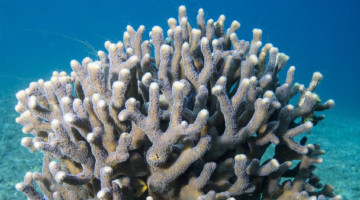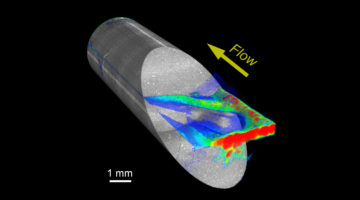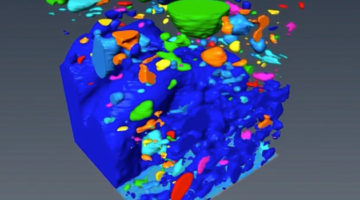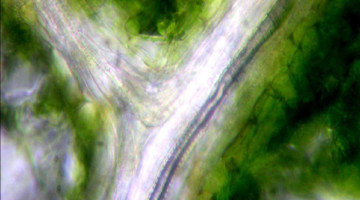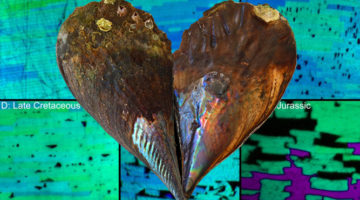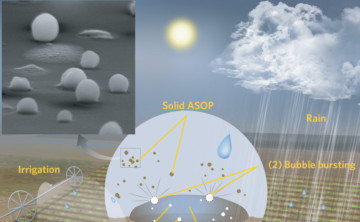Researchers have discovered some good news regarding corals: the mechanism by which their exoskeletons grow may help them resist the effects of ocean acidification. The discovery, made with PEEM studies, has ramifications not only for the health of coral reefs, but for applications such as 3D printing as well. Read more »![]()
![]()
Fracture Evolution in Carbonate-Rich Shale
Accurate assessment of the suitability of subsurface rock formations for CO2 containment requires a good understanding of fracture evolution. Researchers combined x-ray microtomography with advanced computer simulations to improve models of fracture development in carbonate-rich shale samples. Read more »![]()
![]()
Amorphous calcium carbonate particles form coral skeletons
Skeletons of Stylophora pistillata corals form by the attachment of amorphous calcium carbonate precursor particles, formed within the coral tissue, to the coral skeleton surface. This mechanism is faster than the precipitation of ions from solution and may render the corals less susceptible to ocean acidification than previously assumed. Read more »
New Evidence for a Water-Rich History on Mars
Mars may have been a wetter place than previously thought, according to experiments on lab-synthesized mineral samples serving as proxies for Martian meteorites. Shock experiments followed by x-ray diffraction studies showed how changes in the minerals could indicate a more water-rich history for the Red Planet. Read more »![]()
![]()
How X-rays Helped to Solve Mystery of Floating Rocks
Some rocks can float on water for years at a time before eventually sinking. X-ray microtomography studies help explain how by scanning samples of lightweight, glassy, and porous volcanic rocks known as pumice stones. Their surprisingly long-lived buoyancy can help scientists discover underwater volcano eruptions. Read more »
3D Visualization of Leaves during Drought
The veins of living leaves at increasing levels of drought stress were visualized using x-ray microtomography. The results expand our view of leaf drought responses, beyond the traditional embolism-centric view, to a broader focus on the role of the surrounding living tissues in water movement during drought. Read more »
Ancient Ocean Temperatures Recorded in Mother-of-Pearl
Researchers have shown that the thickness of the nacre, or mother-of-pearl, that lines the insides of mollusk shells can be used to estimate ocean temperatures as far back as the early Jurassic period. X-ray studies of modern and ancient shells help establish the method’s feasibility. Read more »
Glowing Crystals Can Detect, Cleanse Contaminated Drinking Water
Tiny, glowing crystals designed to detect and capture heavy-metal toxins such as lead and mercury could prove to be a powerful new tool in locating and cleaning up contaminated water sources. The crystals function like miniature, reusable sensors and traps, and are known as luminescent metal-organic frameworks, or LMOFs. Read more »
A Cleansing Rain Falls; a Soil-Filled Mist Arises
Rain’s reputation for cleansing the air may come with a caveat after new findings, including STXM and NEXAFS data, show that raindrops play a role in generating airborne organic particles. The findings could influence how scientists model our planet’s climate and future. Read more »
Getting to the Root of Grapevine Hydraulics
In grapevines, “root pressure” was assumed to play a role in recovering from embolisms (blockages) in a plant’s water-transport systems during drought conditions. To clarify this, researchers used ALS Beamline 8.3.2 to obtain 3D microtomographic images of grapevine stem segments detached from roots and leaves. Read more »
- « Previous Page
- 1
- …
- 4
- 5
- 6
- 7
- 8
- Next Page »
